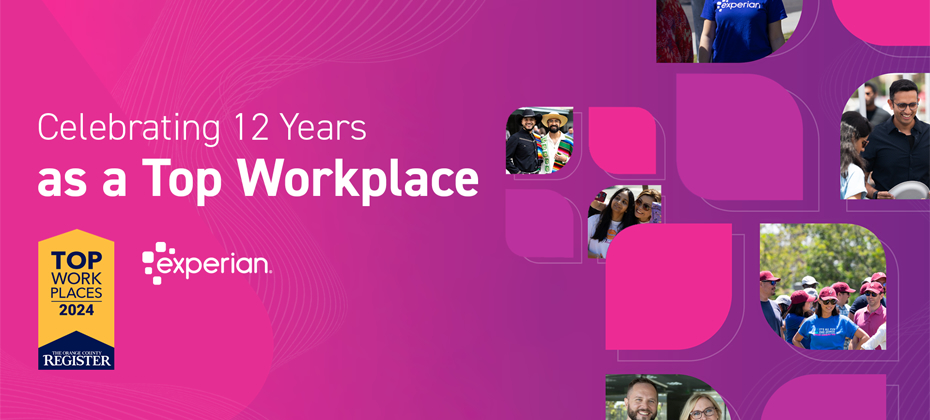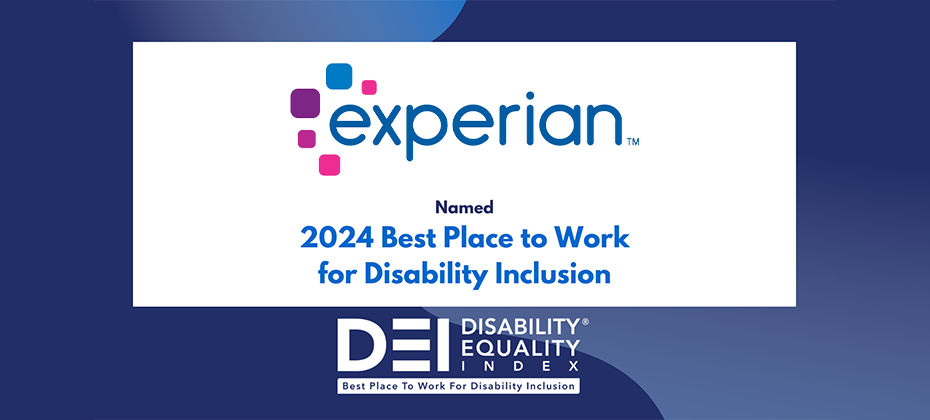At A Glance
At a Glance When an unknown printer took a galley of type and scrambled it to make a type 2ince the 1500s, when an unknown printer took a galley of type and scrambled it to make a type specimen book. It has survived not only five centuries, but also the leap into electronic typesetting, remaining essentially unchanged. It was popularised in the 1960s with the release ince the 1500s, when an unknown printer took a galley of type and scrambled it to make a type specimen book. It has survived not only five centuries, but also the leap into electronic typesetting, remaining essentially unchanged. It was popularised in the 1960s with the releaseince the 1500s, when an unknown printer took a galley of type and scrambled it to make a type specimen book. It has survived not only five centuries, but also the leap into electronic typesetting, remaining essentially unchanged. It was popularised in the 1960s with the releaseince the 1500s, when an unknown printer took a galley of type and scrambled it to make a type specimen book. It has survived not only five centuries, but also the leap into electronic typesetting, remaining essentially unchanged. It was popularised in the 1960s with the releaseince the 1500s, when an unknown printer took a galley of type and scrambled it to make a type specimen book. It has survived not only five centuries, but also the leap into electronic typesetting, remaining essentially unchanged. It was popularised in the 1960s with the release

Experian kicked off its 33rd annual Vision 2014 Conference today in Dallas with the keynote address that attendees have been anticipating for months – President Bill Clinton, the 42nd President of the United States and founder of The Clinton Foundation. Although President Clinton addressed many topics in his talk including some of the important initiatives his foundation is spearheading, the theme centered around creative cooperation and the success that is achievable when people focus on their common goals. Experian hosted 32 breakout sessions throughout the day for attendees. Experian thought leaders, clients and industry experts discussed how to achieve quality growth in a challenging economic and competitive environment. View slides from today's presentations: Know your enemy – a financial institutions best practices for preventing the latest fraud attacks Customer acquisitions in a changing digital landscape The new world of commercial lending – optimizing opportunities and winning new customers Trends in commercial card and small business lending The evolving landscape of customer management To trust or not to trust Regulatory requirements for model risk governance continue to evolve And check out some favorite tweets from today's conference.

Is your organization prepared to meet these requirements? Although some of the regulatory guidance on Model Risk Governance was released recently, it is nothing new and needs to bean integral and integrated part of an organization’s way of thinking, risk management and overall business strategy. Many organizations have recently invested in this area. Given the significant time and resource required and the need to know and follow industry best practice, these same organizations have reached out and partnered with Experian as their trusted advisor. Experian has helped all types and sizes of financial institutions to not just ensure regulatory and compliance demands are met but to meet their business needs and objectives, protect their safety and soundness and increase profitability and return. Experian has played whatever role needed, whether it is analytics, modeling, consulting or simply staff augmentation, for many of the Top 5 U.S. Banks and international banks in addition to mid-size to small banks, financial institutions and credit unions. One important outcome of the financial crisis of the late 2000’s was increased regulatory oversight which includes an emphasis and need to track changes in the economic environment, as well as, ensure proper application of model development, implementation, use and governance in order to make sure there are no undue risks and ensure the safety and soundness of the institution. This is clearly not a one-time exercise but a valuable on-going part of proper risk management that will lead to better decisions and enhanced business performance. Let Experian help show you the way! Vision 2014: Regulatory requirements for model risk governance from Experian Business Information Services Tweet This! Changes in economic environment or misapplication of models exposes an organization Click to Tweet Regulators expect greater use of risk models as result oversight increased to review the mgmnt of these models http://ex.pn/RodDsG Click to Tweet Model Risk Governance not new concept, but emerging best practice for model risk attribute stability mgmt http://ex.pn/RodDsG #vision201 Click to Tweet

To trust or not to trust is the ultimate question when it comes to online, card not present transactions. For e-commerce merchants and online shoppers it should be a two-way street. But far too often, a customer who should be trusted has a transaction wrongfully declined. This tarnishes their relationship with the merchant, the bank and the credit-card company, resulting in loss of revenues, interchange fees and most importantly, lifetime loyalty. The impact of consumer action in the face of a decline can have real and measurable effects on all parties, including credit card companies, banks and merchants manifesting itself in lost revenues, lost fees and lost customer loyalty. In fact, in a recently commissioned independent survey by 41st Parameter, a part of Experian, 17% of consumers surveyed had an online transaction declined. That equals about $40 billion lost each year due to false positives… $40 billion that could be reclaimed. What’s even more distressing for consumers, however, is how they FEEL when their online transaction is declined. 83% of those surveyed felt upset, embarrassed or just plain angry. These powerful emotions are evident in WHO the consumer blames for the unwarranted decline – the simple fact is that consumers blame everyone; from the issuing bank to the credit network to the online merchant. Bottom line; everyone loses. Unnecessary operational costs. Decreased loyalty. Interchange loss. Lost revenues. These are just some of the negatives to unwarranted CNP transaction declines. This session will explore how to improve customer service and loyalty by leveraging information merchants and issues already have about consumers – including their buying patterns, methods and payment and devices they use. The combination of these and other factors creates a TrustScore which helps both the merchant AND the issuer determine if these are consumers that can be trusted – even if they only shop with a merchant on a casual basis. Recognizing customers through trusted digital identities and approving more CNP transactions in real-time provides the opportunity for online retailers to collectively boost top-line revenues by as a much as $1 billion annually. Vision 2014: To Trust or Not To Trust from Experian Business Information Services Tweet this! $40B lost each year b/c unnecessary red flags raised & transactions blocked http://bit.ly/41stinfo #vision2014 Click to Tweet 38% of online shoppers blame their credit card company for CNP http://bit.ly/41stinfo #vision2014 Click to Tweet What’s the key to commerce in the digital world? Trust. How do we know that? Here’s the data to prove it. http://bit.ly/41stinfo #vision2014 Click to Tweet [INFOGRAPHIC] How to foster consumer trust in a digital world http://bit.ly/41stinfo #vision2014 Click to Tweet

Increasingly Experian’s clients are questioning whether they are extracting full value from their data. There’s more data, more accessible analytic capability – there should be more value created. But this growing information asset needs to be harnessed by targeting it in the right way (generating the right insights) and having the processes to minimize the time from insight to action. Technology and techniques need to be aligned to efficiently capture, analyze and action customer insight in a concerted way, with the customer view at the center of this activity. Understanding customers’ current circumstances, and the challenges & opportunities they are likely to encounter, can help us establish what they need right now and predict their future needs. Identifying life event triggers, and effectively actioning these triggers, can help us ensure that we’re maximizing the customer’s lifetime value with the right communications, with the right content, at the right time. There are two distinct directions companies are taking to extract value from their new customer insight. The more established route is refining the current business (e.g., optimizing offer pricing, enhancing pre-attrition and pre-default models, and refining cross-sale relevancy models). But increasingly, companies are looking to their customer data as a platform for expanding their business – either by using their unique customer insights to market external propositions or by identifying adjacencies where their existing client base provides a competitive advantage. Either way, customer information can be the key to growth. Vision 2014: The evolving landscape of customer management from Experian Business Information Services

Gone are the days when news of a data breach was shocking. Today they have become all too common an occurrence. One of the most concerning issues around breaches is that many consumers' digital identities are based on a single email address or username/password.With stolen identity data in hand, criminals can submit fraudulent mortgages, credit card applications, even create fake credit cards, in the names of thousands of unsuspecting victims. Regardless of how the data is used, one thing is certain: breaches pose serious dangers to consumers, retailers and financial institutions. The need for customer-friendly fraud management is stronger than ever. A single layer of protection is simply ineffective as criminals are more efficient than ever in obtaining consumer identification details and compromising simple access credentials. While mobile technologies and the Internet itself have enabled consumers to have anytime access to their financial data, these advances are the very means by which criminals perpetrate fraud. And customer-friendly technologies and policies continue to outpace the controls and risk management. What controls does your organization have in place to ensure that a fraudster in Malaysia isn't using a legitimate identity and an anonymous proxy to submit credit card applications? Or to alert when a long-standing offline banking relationship suddenly enrolls online? The days and weeks following a breach are a time of heightened risk. Even after a breach has occurred, the risk can be managed. In “Know Your Enemy”, a fraud prevention focused break out session at Experian’s 2014 Vision conference (#vision2014), Ori Eisen @orieisen and Matt Ehrlich @ehrlichmatters cover current trends and practices for taking on the growing industrialization of fraud. Together with a risk executive from a leading bank, the team discusses several themes and emerging tactics, including: the cost of single channel fraud prevention strategies, the necessity of a layered security strategy that includes device and identity intelligence, and true real time, point of contact risk-scoring. Vision 2014: Know Your Enemy – a financial institution’s best practices for preventing the latest fraud attacks from Experian Business Information Services

For small business owners, the bumpy ride continues. Not that things aren't getting better; they are. Or at least, when you take a step back from the monthly assessments of small business optimism, and observe the trend lines over the last couple of years. But It’s the up and down, uneven nature of the monthly reporting that gives you this picture of a “she loves me, she loves me not” world small business owners must be living in. At least life isn't boring. From a lenders perspective, it may not be quite so erratic. The larger small businesses are providing good opportunities for lenders to provide new financing. Demand is growing, and that is a good thing. In addition, new forms of financing are growing in popularity. Alternative lenders are providing direct financing to small business owners, and providing competition for more traditional banks. Credit cards are being embraced more and more by small business owners, and provide some nice fringe benefits to owners. Extending payments, rewards programs, and just plain old convenience are among the benefits small business owners can enjoy by paying their vendors with a credit card. Not a bad way to go! The increased use of small business cards is just one example of a growing trend spawned during the economy’s comeback from the “great recession”. Lenders have better tools available to them to grow their small business portfolios, and also to manage them better. Recent advances in technology and data availability (dare I say “big data”) are providing lenders opportunities for more cost-effective targeting of risk and opportunity. The ability to cross-sell consumer clients who may also be small business owners is a lower cost way to identify solid prospects for commercial products, as well as a way to potentially reward customer loyalty. Benchmarking is another trend that has been shown to provide lenders a tremendous amount of insight into how different segments of customers behave, and help to inform strategic policy. 50 002 trends-in_commercial_card_and_small_business_lending from Experian Business Information Services

In the early 1970’s a brilliant engineer/inventor/music lover designed a credit card sized electronic music player. Early prototypes and models of this small music player received the accolades of “the most radical music system ever” from the audio industry. Many of you may think I am talking about Steve Jobs – well I am not. This inventor however was distracted, did not pay attention to the business and saw the technology get away from him. And that is why today, Jobs and Apple’s 1.75 billion iPods are a household name and Kane Kramer is not. So the question for you today is…are you keeping your eye on the technology, trends, and market place that will make your commercial lending efforts successful and sustainable? In a CEB TowerGroup survey, bank executives clearly called out that maximizing credit applications with quality growth is the top priority for 2014. To be successful in achieving that growth commercial bankers will be focused in 2014 and beyond on these five key areas: (1) Rationalizing infrastructure, (2) Optimizing sourcing, (3) Centralizing risk management, (4) Enhancing liquidity management, and (5) Implementing commercial loan management solutions. To back that claim, in the 2013 Sales Readiness Assessment, CEB TowerGroup found that banks that are taking these steps to lead in technology changes were seeing an increase of 8% in their top performing relationship managers, and a 13% increase overall. And while growth is critical, we cannot take our eye off the existing portfolio. Best practices suggest that to make the most impact in 2014, institutions should in the next 90 days to take steps to look at their individual loans, but with multiple factors, e.g. duration, convexity, and yield. But even more important banks should aggregate these views to a portfolio level to make sure that can optimize returns overall. So while we see that in commercial lending the 3-year CAGR is now 10.5% and looking stronger, banks need to focus and not be distracted and capitalize on these opportunities. Invest and stay focused on the future! Vision 2014: The new world of commercial lending from Experian Business Information Services Tweet this! Not focusing on #innovation & change can cost you. Kramer designed IXI in the 70's. But #apple gained with 1.7 B #ipod sold. #vision2014 Click to Tweet This At @ExperianVision and Joanne Pollitt from CEB Tower Group talking about #change in cmcl #banking for 2014. Are you ready? @ExperianVision Click to Tweet This What is your #banks top #commercial #banking #initiative for 2014?? How can @Experian_DA_GCP and @Experian_US help you #succeedandproceed Click to Tweet This

4000! Consumers view over 4000 ads per day. As a result they are overwhelmed with information and opt not to see what could be waiting for them. The best way to grab the consumer’s attention and CLOSE the sale is to target them with content directly related to their interests. This is not an easy task, but Experian can help lenders stay above the noise and drive relevant traffic to their websites. We can turn a site visit into a credit qualified lead and ultimately a high-quality booked account – cutting through the “junk” that drags down your portfolio’s performance. Are you sure you have a truly optimized digital prospecting strategy? Do you have the data to drive both the targeted advertising for increased site traffic and to customize the credit offers that empower the consumer to complete an application? Experian has the data assets to help you tailor the entire online experience for the least amount of online friction. For example, your advertisements can be as customized as creating a multi-channel cross-device experience based on your own marketing history or you can optimize your current online advertising strategy using additional data elements to get the most out of your marketing dollars. Use marketing and credit data to stay relevant and generate the highest quality traffic. The consumer has come to the store – you still need to close the sale! Experian’s ability to leverage data once the consumer has reached the site is the new frontline for developing a relationship with your customers. By bringing credit data to the beginning of the conversation, before they have decided to apply, you can learn from your customer and educate them on their best option. You can’t deny wanting to help your customers find the right products for them but also increase your ROI, and continue to maintain your risk modeling. Come see what Experian can do for you! Learn how our data-driven solutions can help you create a tailored digital consumer experience to build customer loyalty and drive new loan growth. Vision 2014: Customer acquisitions in a changing digital landscape from Experian Business Information Services Tweet this! 90% of our media interactions are screen-based. #digitalmarketing #vision Click to Tweet We spend over 4 hours a day on average in front of screens of increasingly diverse sizes? #digitalmarketing #vision2014 Click to Tweet Consumers choosing online & #mobile channels to engage, creating challenge in authenticated cross-selling #digitalmarketing #vision2014 Click to Tweet Deliver the right message to the right consumer about the right product – optimize your # digital strategy #digitalmarketing #vision2014 Click to Tweet Experian is only bureau able to offer targeted digital advertising capabilities and robust credit decisioning tools #vision2014 Click to Tweet

The amount of data being generated nowadays is staggering. In fact, according to one source, more data has been produced in the past two years than ever before. Certainly Experian has made it our business to understand all of this data and how to harness it. I’ve recently had the opportunity to consider the impact of data in Formula 1 Racing, the most prestigious and high-tech racing series on the planet. Experian is a sponsor of Williams Martini Racing, which is one of the “big four” teams in the sport and has produced 16 Formula One World Championship titles. In F1, information is used to provide innovation and engineering expertise that creates the world’s fastest and most powerful cars. One the most fascinating elements of the F1 experience is to see what happens in the Williams Martini garage during a race. A team of master technicians watch several monitors and track an overwhelming amount of real-time data during the race – from minute details about the car, to changing weather conditions, to information about all the other race cars. Then these highly trained racing engineers instantaneously analyze the data and provide it to the pit crew and the driver in order to make the best possible decisions to win. There is a parallel to what we’re doing at Experian and our Information Services business. A team like Williams Martini Racing consistently puts a competitive car on the track year after year because of its ability to analyze technical data and improve its chances of winning. This is exactly what Experian does for our clients. We constantly push the envelope by developing innovative applications to capture the value hidden within data. For over 30 years, we have harnessed the power of Big Data for our clients. We gather data and utilize analytics to produce winning business insights. We enable our clients to drive revenue, increase profitability and gain greater competitive advantages. It might not be as glamorous as an F1 race in Monte Carlo, but at Experian, we share the same motivations as Williams Martini Race to use data correctly in order to deliver winning results. At the end of the day, F1 racing is about maximum performance. At the end of OUR day, Experian is about bringing value to consumers and maximum performance for businesses.
![Big cities, big debt? [Infographic]](https://stg1.experian.com/blogs/news/wp-content/uploads/default-post-image.png)
Debt is often thought of as a scary word and many spend their lives trying to avoid it at all costs. Understanding what credit is, why you need it and how to build it can help make it less frightening and can actually put you in control. Debt doesn't have to be a four-letter word. To wrap up Financial Literacy Month, Experian released a study this week that takes an in depth look at debt and credit scores in the 20 largest cities across the U.S. and compares the numbers to where these cities were four years ago. The findings show that Detroit residents have the least amount of debt, while the residents of Dallas have the most. From a national perspective, debt has increased by 5 percent and in 19 of the 20 cities studied, average debt has increased, which actually signals a positive trend. How is that possible, you ask? Well, the analysis showed that with the increases, these large cities are actually managing the debt they have quite well, and that credit lending is opening up. REMEMBER: Credit is a tool that if managed correctly can be a positive – the key is not to misuse the credit you have. Take a look at the map below to see how these large cities fared, and visit www.livecreditsmart.com to read more about the study and how you can make better financial decisions and be more aware of where you stand from a credit perspective. In today’s changing economy, it’s more important than ever to take control of your credit and live credit smart no matter where you live. See the map below and view the news release for more information on this study.
![Are you concerned your child is a fraud victim? [Infographic]](https://stg1.experian.com/blogs/news/wp-content/uploads/default-post-image.png)
Did you know children are increasingly vulnerable to being a victim of identity theft? Their clean credit history is an easy target for perpetrators. Thieves often can profit for years before the crime is detected. In general, minors should not have credit activity or a credit report until they apply for loans or a credit card. That said, it is possible that they may have a credit history if you have added them as an authorized user to your credit accounts during their teen years. If you are concerned, checking your credit report is always a good first step in determining whether or not you are a fraud victim, and the same rule applies to children as well. Check out the infographic below for warning signs, steps you can take to see if your child has a credit report and tips to prevent your child from becoming a fraud victim. Here are the measures Experian uses to protect minors’ credit histories: Experian will not knowingly disclose a credit report that belongs to a minor except to a parent or legal guardian. At www.annualcreditreport.com if you enter a birth date that is associated as being under the age of 13, it will automatically reject the request to pull the credit report. Experian will not provide a credit report to a lender if our records indicate the report belongs to a minor. We will return a notice to the lender that states the report they requested is associated with a minor. The lender then can take appropriate action to protect the child from credit fraud. You cannot request your child’s credit report without providing appropriate documentation that proves you are the parent or legal guardian. For more information on minor’s credit visit the Ask Experian blog.

Experian-Oliver Wyman data reports a 46 percent increase in home equity lending; 19 percent increase in bankcard origination volume Costa Mesa, Calif., April 30, 2014 — Experian®, the leading global information services company, today released year-end analysis of credit and mortgage trends from the 2013 Q4 Experian–Oliver Wyman Market Intelligence Report that showed positive economic indicators along with smarter consumer spending. “Overall from 2013 we saw a strong steady improvement in the economy similar to our 2012 year-end review. Consumer confidence increased as they continue to be resilient during the ongoing recovery,” said Linda Haran, senior director of product management and strategy for Experian Decision Analytics. “While overall consumer debt increased 6 percent, it was not heavily weighted in one particular VantageScore segment. Debt increases occurred across all VantageScore consumer segments equating to a balanced distribution of increases in total debt year-over-year. That represents smarter spending among all consumers.” “Other positive indicators coming out of 2013 include bankruptcies declining 12 percent from 2012 and consumer delinquency trends continuing to decrease. Home Equity originations realized strong growth in 2013, exceeding 2009 levels as new lending was up 42 percent in Q4 2013 over the same period a year ago.” Watch Experian Decision Analytics analysts Linda Haran and Alan Ikemura discuss the latest trends from the Experian-Oliver Wyman Q4 2013 report on consumer debt, bankcards, mortgages and auto. 2013 Mortgage trends included: Overall mortgage origination volume in 2013 was $2 trillion up from $1.9 trillion in 2012 2013 saw annual growth of 25% in new home purchase volume compared to 2012 Overall mortgage 30+ day mortgage delinquency rates were down 14 percent in 2013 versus 2012 The West region saw 30+ day mortgage delinquency rates drop 23 percent in 2013 versus 2012. California saw a 24 percent decline in late mortgage payments. 2013 Bankcard trends included: Analyzing the data for 2013 shows a 19 percent increase in bankcard origination volume, growing from $228 billion to $271 billion year over year. Two-thirds of new bankcard originations occurred among the Super Prime (781 – 850) and Prime (661-780) VantageScore tiers. The U.S. 60+ day delinquency bankcard rates overall improved 14.5 percent in Q4 2013 versus Q4 2012. All 50 states saw bankcard delinquency rates improve for the 60+ day category. California, Tennessee, Massachusetts, Michigan and Wisconsin were the top 5 states that improved their 60+ day delinquency bankcard rates in Q4 2013. Arizona, New Mexico, Arkansas, West Virginia and Alaska were the bottom 5 states in terms of overall percentage improvement among 60+ day delinquency bankcard rates in Q4 2013. Experian has dedicated educational resources to help consumers understand the impact debt has on credit. Consumers can visit our Live Credit Smart website to learn more. For more insight from Experian Decision Analytics, watch our 2013 Q4 Experian–Oliver Wyman Market Intelligence Report presentation: http://ex.pn/1eJaRZB. Make sure to join us for Q1 2014 Experian–Oliver Wyman Market Intelligence Report webinar. About the data The data for this insight and analysis was provided by Experian’s IntelliViewSM product. IntelliView data is sourced from the information that supports the Experian–Oliver Wyman Market Intelligence Reports and is easily accessed through an intuitive, online graphical user interface, which enables financial professionals to extract key findings from the data and integrate them into their business strategies. This unique data asset does this by delivering market intelligence on consumer credit behavior within specific lending categories and geographic regions.











